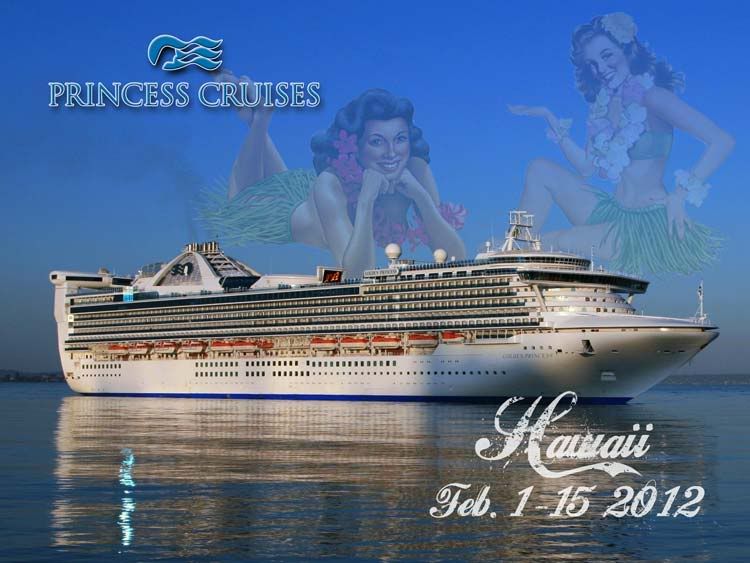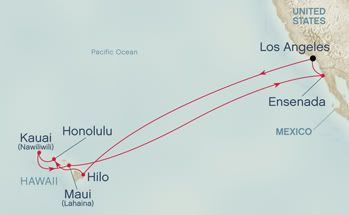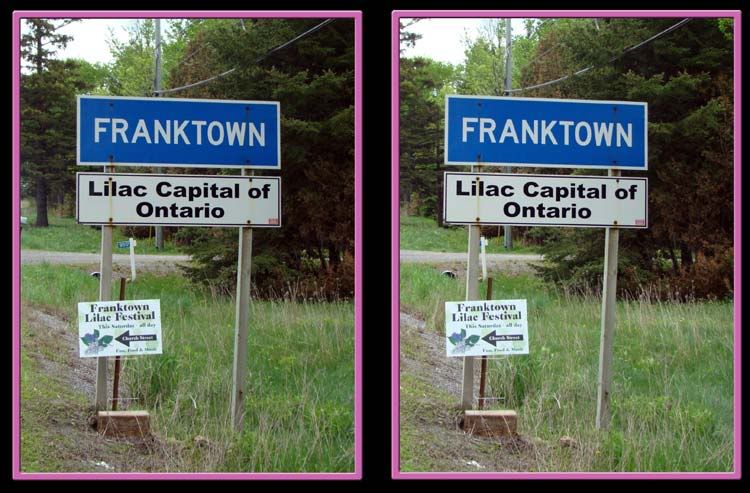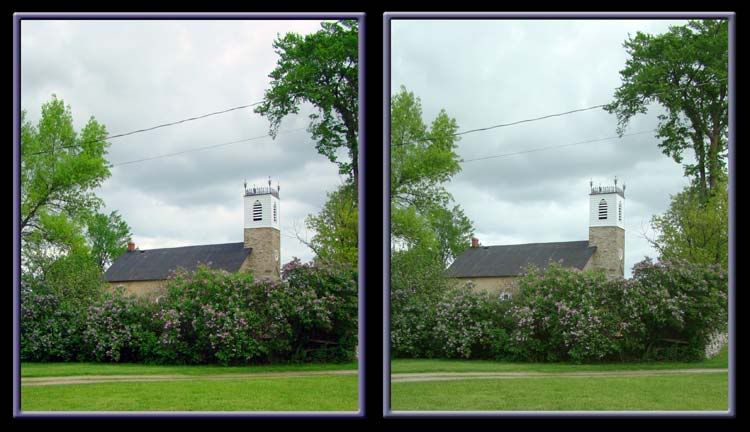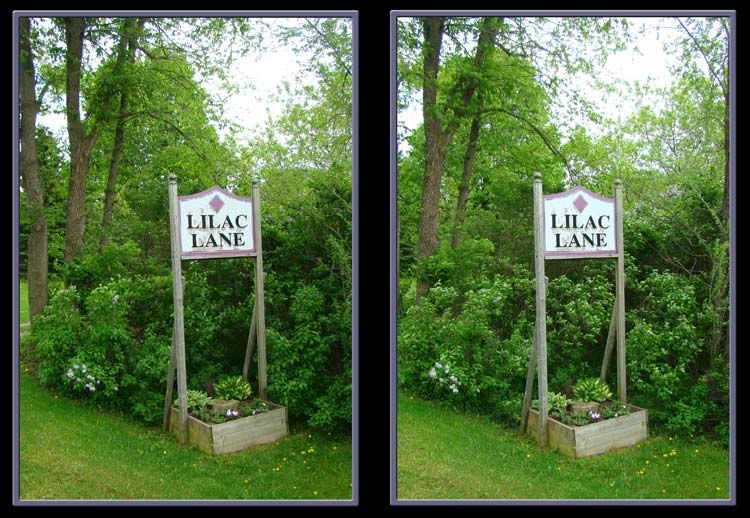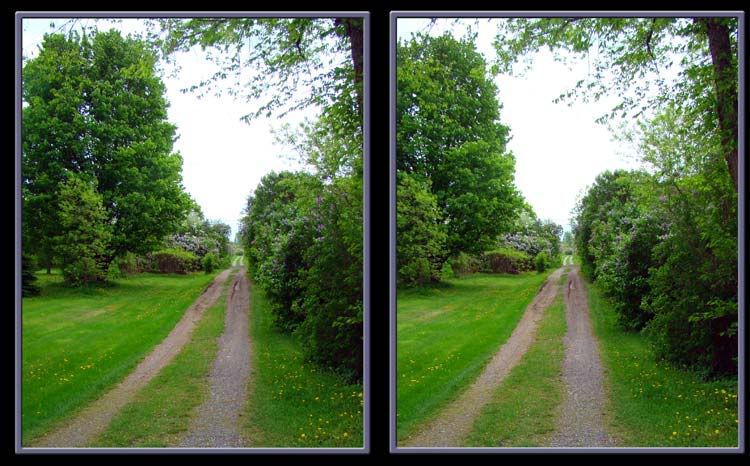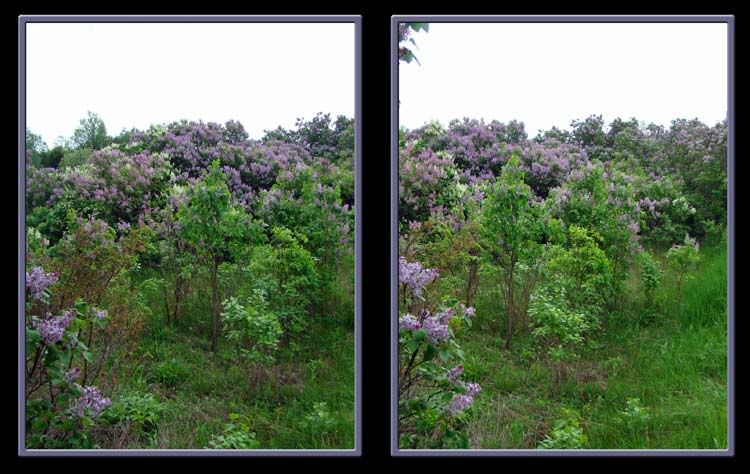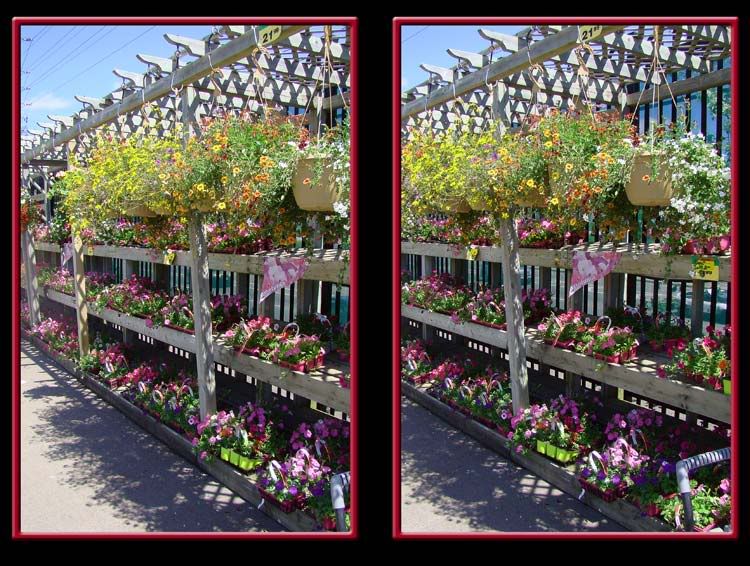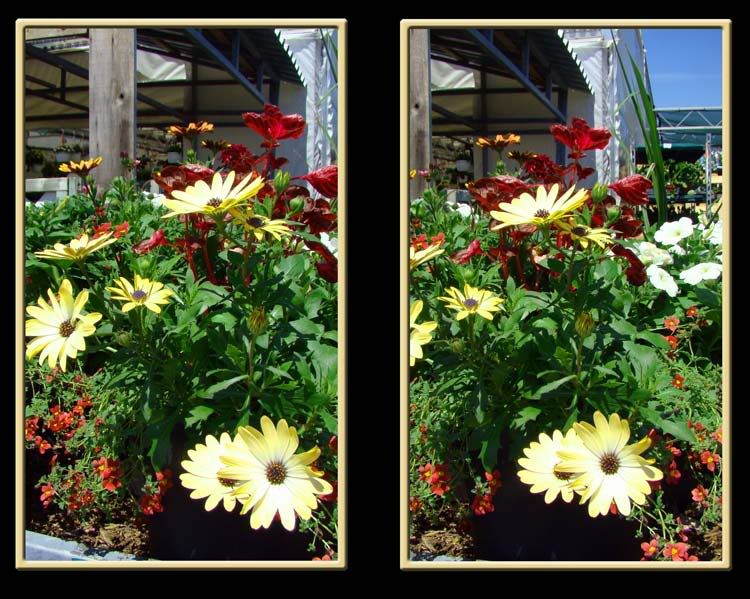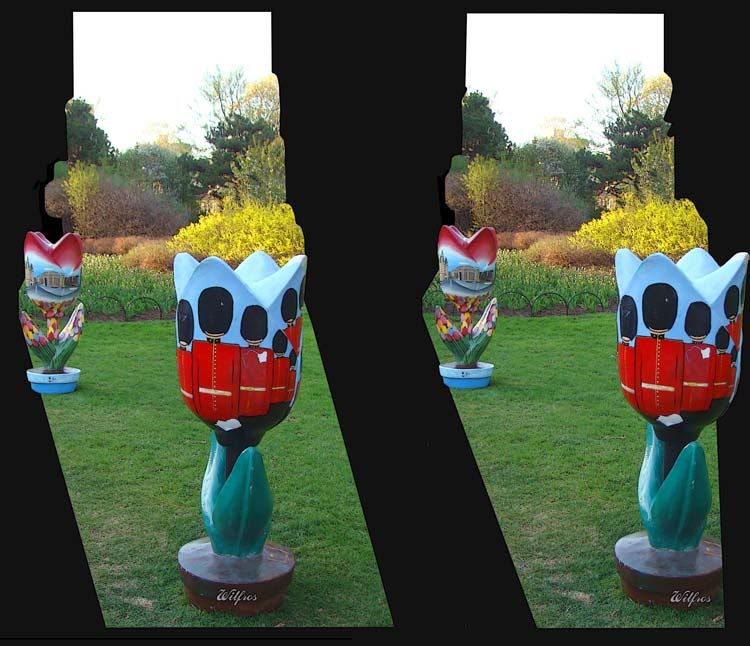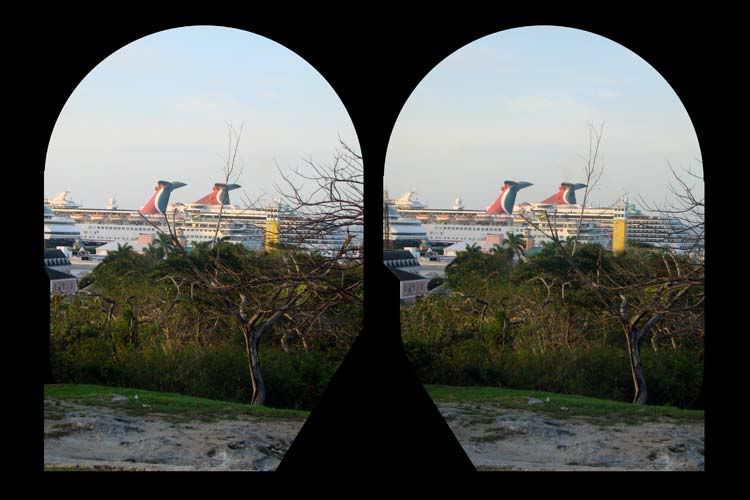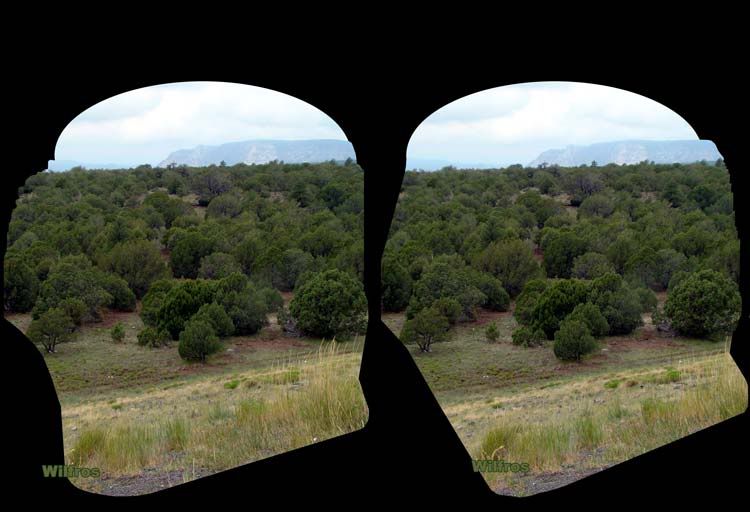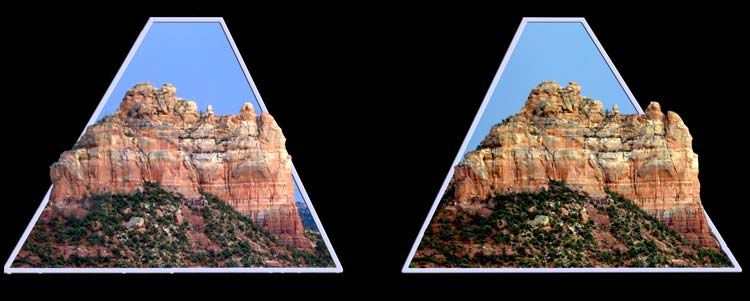The Manhattan Cruise Terminal
had its start as the New York City Passenger Ship Terminal in the 1930s, when Mayor LaGuardia built long, modern finger piers out into the Hudson along Manhattan's west side. For much of the early twentieth century, a half dozen of the world's greatest passenger ships docked side by side from Piers 84 to 94-a stretch that became known as Luxury Liner Row-starting with the Normandie in 1935, followed by the Queen Mary the following year and the Queen Elizabeth after the outbreak of World War II. During the war, thousands of GI's embarked on the latter two ships for the European theater of war-16,683 at once when the Queen Mary departed from Pier 90 in July 1943.
Kings, queens and Hollywood royalty enjoyed luxurious post-war cruises, departing from the Terminal in great numbers. Despite the advent of affordable air travel in the 1950s, cruising enjoyed a resurgence of popularity in the 1960s, with Bermuda as a popular destination. Following renovation of the piers in 1970, the Terminal has served the expanding cruise travel business, and continued its historical role of providing embarkation for all transatlantic crossings.
The Terminal was closed after the terror attack on September 11, and served for more than three months as an emergency management command center for city, state and federal agencies. In January 2002, the Queen Elizabeth 2 was the first cruise ship to return to the terminal, embarking from New York City on a 108-day world cruise.
Cape Liberty Cruise Port
The 430 acre site in Lower New York Harbor was created by private developers in the 1930s as a man-made peninsula off the eastern end of Bayonne, New Jersey. Initially developed for industrial use, the U.S. War Department and the Department of the Navy became interested in the site as World War II approached. There was a desperate need for an additional facility to support the Brooklyn Navy Yard and the overall war effort.
In December, 2003, the BLRA and Royal Caribbean International announced an agreement to establish a cruise port. Christened the Cape Liberty Cruise Port, the refurbished terminal would serve as the new seasonal homeport for Royal Caribbean's Voyager of the Seas. Design and construction of the cruise port, including a passenger terminal, ship berths, Customs and INS facilities, visitor parking and bus and taxi areas, began in January 2004, and was completed, incredibly, in just eight weeks. The maiden sailing of the Voyager of the Seas was on May 14, 2004. The voyage marked the first time a passenger ship vessel had sailed from New Jersey in almost 40 years.
In 2004, Royal Caribbean's Empress of the Seas also sailed regularly from Bayonne. In its inaugural season, over 237,000 passengers safely traveled through Cape Liberty Cruise Port.
During 2005, ships included Royal Caribbean's Enchantment of the Seas, Voyager of the Seas, and Celebrity Cruises' Constellation and Zenith. Passenger volume for 2005 was over 300,000 - the second largest among Northeast and Mid-Atlantic coast ports.
Finally, on October 12, 2005, Cape Liberty successfully hosted its first conference and trade show – Port Industry Day – in the large passenger terminal building.
And while The Peninsula at Bayonne Harbor has already become a world-class destination for filmmakers and vacationers alike, the future looks even more promising.
Brooklyn Red Hook Pier:
Brooklyn's historic waterfront served as the gateway for the nation's goods and people for more than 150 years. Pier 12, developed just prior to the Civil War, has almost exclusively served as a cargo pier for all types of goods, up until 2005 handled ships laden with New York City's road salt being transformed into its newest luxury cruise ship terminal.
Other Photos (Google Earth) of New York:
More Google Earth Ports to come
Sunday, May 29, 2011
Friday, May 27, 2011
More Cruise Photos to come...
We just booked our next cruise.
We will be sailing on Golden Princess out of Los Angeles February 1st for 14 days (and nights), round trip to Hawaii. Hey, this cruise will include Valentines Day and Superbowl! Should be great for parties!
Day Port Arrival Departure
Should be fun and a great trip for 3D photos. I am looking into DSLR Cameras and a proper 3D lens to allow for the taking of some action shots rather than my limited opportunities now for just still or posed photos..
More to come.
Note: Map Photo taken from Princess.com
We will be sailing on Golden Princess out of Los Angeles February 1st for 14 days (and nights), round trip to Hawaii. Hey, this cruise will include Valentines Day and Superbowl! Should be great for parties!
Day Port Arrival Departure
| 1 (Wed) | Los Angeles, California | 4:00 PM | |
| 2 (Thurs) | At Sea | ||
| 3 (Fri) | At Sea | ||
| 4 (Sat) | At Sea | ||
| 5 (Sun) | At Sea | ||
| 6 (Mon) | Hilo, Hawaii | 8:00 AM | 5:00 PM |
| 7 (Tue) | Honolulu, Hawaii | 7:00 AM | 11:00 PM |
| 8 (Wed) | Kauai (Nawiliwili), Hawaii | 8:00 AM | 5:00 PM |
| 9 (Thurs) | Maui (Lahaina), Hawaii | 7:00 AM | 6:00 PM |
| 10 (Fri) | At Sea | ||
| 11 (Sat) | At Sea | ||
| 12 (Sun) | At Sea | ||
| 13 (Mon) | At Sea | ||
| 14 (Tue) | Ensenada, Mexico | 2:00 PM | 8:00 PM |
| 15 (Wed) | Los Angeles, California | 7:00 AM |
Should be fun and a great trip for 3D photos. I am looking into DSLR Cameras and a proper 3D lens to allow for the taking of some action shots rather than my limited opportunities now for just still or posed photos..
More to come.
Note: Map Photo taken from Princess.com
Tuesday, May 24, 2011
The Franktown Lilac Festival!
Recognizing the scale and massing of the lilacs in the area, the municipality of Beckwith Township officially designated Franktown, in 1994, as “Lilac Capital of Ontario.” Starting the 1995 the residents have hosted an annual Lilac Festival in May.
Franktown attracts many local, county and national capital area visitors.
Franktown promotes itself as the "Lilac Capital of Ontario". It is home to Lilac Lane, which features a beautiful park containing many lilac bushes that have grown there naturally over time, and where a lilac festival is held near the end of May. Within the park facility there is also a baseball diamond and play structure.
I am sorry that the wind was blowing rather hard today and this has resulted in less than great quality 3D photos. This was also a rather expensive outing, as I was accompanied by my Wife and Mother in Law. Of course, that meant I was on the hook for lunch as well.
I hope the photos are worth the "Great Expense" I endured.
Monday, May 23, 2011
58 Chevy
Spring doesn't just bring out the flowers ... Other works of art which have been hiding for the winter start to appear. Here is one such example that appeared in the laneway of our Neighbour yesterday. I just had to take a photo.
Sunday, May 22, 2011
The LONG Weekend Continues..
Saturday, May 21, 2011
May 24th Weekend means Gardening!
Victoria Day celebrates Queen Victoria's birthday (May 24th). Canada is still a member of the Commonwealth of Nations, of which the Queen is head.
Victoria Day is always on a Monday, and thus the holiday is part of a long weekend, which is commonly referred to as the Victoria Day Weekend, the May Long Weekend, the May Long, or the May Two-Four (a case of beer there is called a "two-four" and many of these are consumed over the holiday). The weekend is also called the May 24th weekend, although it does not necessarily fall on May 24th.
The Victoria Day Weekend always falls on the weekend before Memorial Day in the U.S.
The Victoria Day Weekend is the first popular weekend for spring / summer travel. Lots of people open up their cottages, plant gardens, or just get away. Expect crowds at resorts and hotels and busy highways. Fireworks displays are common, especially on Monday night.
I'll take photos of any of the plants that manage to live after being exposed to our gardening skills.
Friday, May 20, 2011
Welcome to Parliament Hill
For the times when I can't get out to take my own photos I am going to feature different areas as seen in 3D from Google Earth. I am going to focus mostly on different ports of call for the Major Cruise Lines but thought I would first start with home.
Welcome to Parliament Hill – a symbol of national pride for Canadians and one of the most significant heritage sites in Canada! It is the place where our nation was first created at Confederation, and it continues to shape and define us through the work that happens here.
On February 17th, 1858, the City of Ottawa was officially declared the capital of the United Province of Canada. It was shocking that this industrial town on the northern edge of the wilderness could seriously be considered for such an honour, especially when the news arrived while the town was locked in the bitter cold of a typical Canadian winter!
Larger, more sophisticated cities such as Toronto, Montreal, and Quebec were in the running as were many smaller but bustling cities such as Hamilton and London. However, Ottawa had two undeniable advantages: it was a safe distance from the border with the United States, and it was right on the line between Canada East (Quebec) and Canada West (Ontario). Politically, it seemed a very wise choice, an early example of one of the defining characteristics of our national identity, The Great Canadian Compromise!
Towering over the Ottawa River between the old Upper and Lower sections of Bytown was a limestone cliff with a gently sloping top. For thousands of years it had stood as a landmark on the ancient river highway as native peoples and later European traders, adventurers and industrialists made their way to the interior of the continent. The builders of the Rideau Canal had used it as a military base and named it Barrack Hill, but the huge fortress planned for the location was never built and by 1858 it had lost its strategic importance.
Greater things were in store for this commanding site, as the government began looking for a place to build a permanent home
Construction
Once the architects had been chosen, no time was lost in getting construction underway. Ground was broken on December 20, 1859. The old saying "Haste makes waste" was never more true. No one had taken the time to do any drilling on the site to find out what the rock was like underneath the thin layer of topsoil.
As it turned out, the workers hit bedrock very early and it became clear that they would have to blast out the bed for the foundation. Worse, the architects changed the design so the foundation would have to be 17 feet deeper than originally planned. This slowed the work, which was already behind because of winter conditions. Blasting was also much more expensive and costs began to climb.
The first stones were laid on April 16, 1860. The main type of stone used in all three buildings was Nepean sandstone, a warm ochre-coloured stone which was quarried locally. Other types were used to add colour to the design. Red sandstone from Potsdam, New York and grey Ohio freestone were used to accent windows and decorative details. Grey and green slates were used for the roofs.
The scale of the construction project under way in Ottawa in 1860 was mind-boggling. Nothing this big had ever been done in North America and it was large even by European standards. It is no exaggeration to say that Public Works and the architects were out of their depth
The architects began to make changes to the designs which improved the appearance of the buildings, but also increased the cost. The clerks and managers were inexperienced and had no way of reining in the architects and controlling costs.
Early in 1861, Public Works reported that $1,424,882.55 — more than two-and-a-half times the original estimate — had been spent. In September the site was closed down and the partly finished walls were covered with tarpaulins to protect them from the weather. 1,300 men were thrown out of work. A commission of inquiry was formed in June, 1862 to find out what had gone wrong. The government was determined to solve the management problems and forge ahead.
In 1876, the Library was finally completed, as well as the landscaped grounds. Late in the year the magnificent iron Queen's Gates, forged by Ives & Co. of Montreal, were hung on the main entrance in the Wellington Street Wall. At long last, Parliament Hill was cleared of construction fences, scaffolding and workmen. The young country, not yet ten years old, had a seat of government to rival any in the world for beauty and grandeur.
At 8:37 p.m. on February 3rd, 1916, the alarm was raised that there was a fire in the Centre Block. By the next morning the building was a smoking ruin, encrusted with ice. Only the Library survived because of the foresight of librarian Alpheus Todd in insisting on iron fire doors and clerk "Connie" MacCormac's quick thinking in ordering them to be slammed shut before evacuating the building.
It was unbelievable. Across the country headlines screamed the news, 'Parliament Buildings Destroyed by Fire', 'Parliament Buildings Gone'. In fact, the departmental buildings were untouched, and the library was saved. But it was bad enough. How could this have happened? Almost immediately, speculation began that a spy had deliberately set the fire but it proved to be something far less sinister.
That evening, a gentleman in the Reading Room in the north west part of the building noticed something, probably a cigar, smouldering in a wastebasket. It happened all the time. As he left the room, he called it to the attention of a clerk but it was already too late. The embers had come to life and spread with amazing speed. The room, panelled with wood, was littered with newspapers and magazines. Within minutes the fire had spread to the corridors and smoke began to fill the building. The interior of the Centre Block was finished with wood, the walls had recently been oiled and the floor varnished. It couldn't have been worse.
The house was sitting that evening when suddenly the doors burst open and a breathless clerk announced that the building was on fire. He later apologized to the house for his abrupt manner but apparently some of those present were still not impressed with the urgency of the situation. Some women in the gallery went back for their fur coats, and perished.
Prime Minister Robert Borden was in one of the offices when he was alerted and escaped by crawling along the corridors on his hands and knees. Others formed human chains to find their way through the thick smoke. Some paused in their flight to grab furniture, artwork or papers. The portrait of Queen Victoria hanging in the Commons was rescued for the second time that night. As the fire intensified, parts of the building started to collapse and some were feared lost under the rubble
.
The fire lit up the night sky as the city watched the spectacle in horror. From a third storey window a few blocks away, the granddaughter of Thomas Fuller watched as his masterpiece was destroyed. Shortly after midnight the great bell in the Victoria Tower crashed to the ground. There was a high wind out of the north west that night. It caught the fire just west of the library and swept it towards the senate. The fire department worked through the night to bring the blaze under control and it looked as though they had succeeded when it suddenly sprang to life again in the senate. It was still burning the next day.
The scene the following morning was desolate. Piles of rescued furniture were heaped here and there. Groups of shivering firemen wrapped their hands around steaming cups of coffee for warmth. The towering form of the library was shrouded by billowing smoke while the ruined Centre Block was caked with ice.
On September 1st 1916, the original cornerstone, which had been salvaged from the ruins, was laid by Prince Arthur, Duke of Connaught, 56 years to the day after it was laid by his brother, now King Edward VII.
After it had been decided that the Centre Block would be completely rebuilt, a team of architects was chosen to produce a design that look as much like the old building as possible. However, many things had changed since the 1850s. New structural techniques and materials had been developed and Public Works had learned some important lessons from the fire. The new building would also be larger than the original and a full storey higher.
John Pearson and J. Omer Marchand planned the new Centre Block with a logical framework of corridors so that access to exits was clear. Instead of wood, the interior walls were Tyndall limestone from Manitoba and the floors were marble. The structure was a modern steel frame but it was covered with the same local Nepean sandstone used for the original buildings.
The government hoped to move into its new building within a year but there was a war on. Materialsand labour were in short supply and expensive. The work continued but slowly.
The first parliament to sit in the new building opened with great ceremony on February 26, 1920, just over four years after the fire.
Text taken from http://www.parliamenthill.gc.ca/index-eng.html
Next Google Earth City to visit New York City.
Welcome to Parliament Hill – a symbol of national pride for Canadians and one of the most significant heritage sites in Canada! It is the place where our nation was first created at Confederation, and it continues to shape and define us through the work that happens here.
On February 17th, 1858, the City of Ottawa was officially declared the capital of the United Province of Canada. It was shocking that this industrial town on the northern edge of the wilderness could seriously be considered for such an honour, especially when the news arrived while the town was locked in the bitter cold of a typical Canadian winter!
Larger, more sophisticated cities such as Toronto, Montreal, and Quebec were in the running as were many smaller but bustling cities such as Hamilton and London. However, Ottawa had two undeniable advantages: it was a safe distance from the border with the United States, and it was right on the line between Canada East (Quebec) and Canada West (Ontario). Politically, it seemed a very wise choice, an early example of one of the defining characteristics of our national identity, The Great Canadian Compromise!
Towering over the Ottawa River between the old Upper and Lower sections of Bytown was a limestone cliff with a gently sloping top. For thousands of years it had stood as a landmark on the ancient river highway as native peoples and later European traders, adventurers and industrialists made their way to the interior of the continent. The builders of the Rideau Canal had used it as a military base and named it Barrack Hill, but the huge fortress planned for the location was never built and by 1858 it had lost its strategic importance.
Greater things were in store for this commanding site, as the government began looking for a place to build a permanent home
Construction
Once the architects had been chosen, no time was lost in getting construction underway. Ground was broken on December 20, 1859. The old saying "Haste makes waste" was never more true. No one had taken the time to do any drilling on the site to find out what the rock was like underneath the thin layer of topsoil.
As it turned out, the workers hit bedrock very early and it became clear that they would have to blast out the bed for the foundation. Worse, the architects changed the design so the foundation would have to be 17 feet deeper than originally planned. This slowed the work, which was already behind because of winter conditions. Blasting was also much more expensive and costs began to climb.
The first stones were laid on April 16, 1860. The main type of stone used in all three buildings was Nepean sandstone, a warm ochre-coloured stone which was quarried locally. Other types were used to add colour to the design. Red sandstone from Potsdam, New York and grey Ohio freestone were used to accent windows and decorative details. Grey and green slates were used for the roofs.
The scale of the construction project under way in Ottawa in 1860 was mind-boggling. Nothing this big had ever been done in North America and it was large even by European standards. It is no exaggeration to say that Public Works and the architects were out of their depth
The architects began to make changes to the designs which improved the appearance of the buildings, but also increased the cost. The clerks and managers were inexperienced and had no way of reining in the architects and controlling costs.
Early in 1861, Public Works reported that $1,424,882.55 — more than two-and-a-half times the original estimate — had been spent. In September the site was closed down and the partly finished walls were covered with tarpaulins to protect them from the weather. 1,300 men were thrown out of work. A commission of inquiry was formed in June, 1862 to find out what had gone wrong. The government was determined to solve the management problems and forge ahead.
In 1876, the Library was finally completed, as well as the landscaped grounds. Late in the year the magnificent iron Queen's Gates, forged by Ives & Co. of Montreal, were hung on the main entrance in the Wellington Street Wall. At long last, Parliament Hill was cleared of construction fences, scaffolding and workmen. The young country, not yet ten years old, had a seat of government to rival any in the world for beauty and grandeur.
At 8:37 p.m. on February 3rd, 1916, the alarm was raised that there was a fire in the Centre Block. By the next morning the building was a smoking ruin, encrusted with ice. Only the Library survived because of the foresight of librarian Alpheus Todd in insisting on iron fire doors and clerk "Connie" MacCormac's quick thinking in ordering them to be slammed shut before evacuating the building.
It was unbelievable. Across the country headlines screamed the news, 'Parliament Buildings Destroyed by Fire', 'Parliament Buildings Gone'. In fact, the departmental buildings were untouched, and the library was saved. But it was bad enough. How could this have happened? Almost immediately, speculation began that a spy had deliberately set the fire but it proved to be something far less sinister.
That evening, a gentleman in the Reading Room in the north west part of the building noticed something, probably a cigar, smouldering in a wastebasket. It happened all the time. As he left the room, he called it to the attention of a clerk but it was already too late. The embers had come to life and spread with amazing speed. The room, panelled with wood, was littered with newspapers and magazines. Within minutes the fire had spread to the corridors and smoke began to fill the building. The interior of the Centre Block was finished with wood, the walls had recently been oiled and the floor varnished. It couldn't have been worse.
The house was sitting that evening when suddenly the doors burst open and a breathless clerk announced that the building was on fire. He later apologized to the house for his abrupt manner but apparently some of those present were still not impressed with the urgency of the situation. Some women in the gallery went back for their fur coats, and perished.
Prime Minister Robert Borden was in one of the offices when he was alerted and escaped by crawling along the corridors on his hands and knees. Others formed human chains to find their way through the thick smoke. Some paused in their flight to grab furniture, artwork or papers. The portrait of Queen Victoria hanging in the Commons was rescued for the second time that night. As the fire intensified, parts of the building started to collapse and some were feared lost under the rubble
.
The fire lit up the night sky as the city watched the spectacle in horror. From a third storey window a few blocks away, the granddaughter of Thomas Fuller watched as his masterpiece was destroyed. Shortly after midnight the great bell in the Victoria Tower crashed to the ground. There was a high wind out of the north west that night. It caught the fire just west of the library and swept it towards the senate. The fire department worked through the night to bring the blaze under control and it looked as though they had succeeded when it suddenly sprang to life again in the senate. It was still burning the next day.
The scene the following morning was desolate. Piles of rescued furniture were heaped here and there. Groups of shivering firemen wrapped their hands around steaming cups of coffee for warmth. The towering form of the library was shrouded by billowing smoke while the ruined Centre Block was caked with ice.
On September 1st 1916, the original cornerstone, which had been salvaged from the ruins, was laid by Prince Arthur, Duke of Connaught, 56 years to the day after it was laid by his brother, now King Edward VII.
After it had been decided that the Centre Block would be completely rebuilt, a team of architects was chosen to produce a design that look as much like the old building as possible. However, many things had changed since the 1850s. New structural techniques and materials had been developed and Public Works had learned some important lessons from the fire. The new building would also be larger than the original and a full storey higher.
John Pearson and J. Omer Marchand planned the new Centre Block with a logical framework of corridors so that access to exits was clear. Instead of wood, the interior walls were Tyndall limestone from Manitoba and the floors were marble. The structure was a modern steel frame but it was covered with the same local Nepean sandstone used for the original buildings.
The government hoped to move into its new building within a year but there was a war on. Materialsand labour were in short supply and expensive. The work continued but slowly.
The first parliament to sit in the new building opened with great ceremony on February 26, 1920, just over four years after the fire.
Text taken from http://www.parliamenthill.gc.ca/index-eng.html
Next Google Earth City to visit New York City.
Wednesday, May 18, 2011
3D Borders (Part 3)
Here are my continuing efforts to work the 3D Borders. Of all the Photo Manipulation Effects I have encountered thus far, this one is the most difficult for me. As I said in previous posts on this subject, I still have work to do before I get this down.
More to come.
More to come.
Subscribe to:
Posts (Atom)












